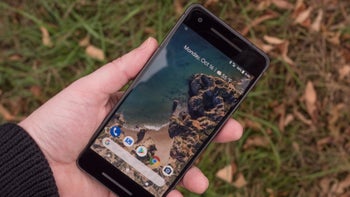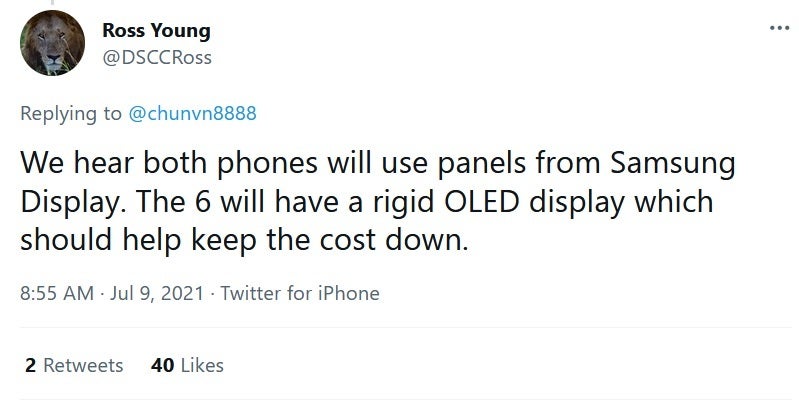Google chooses cost over design for the Pixel 6 5G

Specs that leaked just the other day call for the Pixel 6 and Pixel 6 Pro to sport 6.4-inch and 6.71-inch displays respectively. The Pixel 6 is expected to use an OLED panel while the Pixel 6 Pro is tipped to sport a P-OLED screen that uses a plastic substrate instead of glass. A tweet from Ross Young, CEO of Display Supply Chain Consultant (DSCC), brings some further information.
Google chooses cost over design by reportedly using a rigid OLED screen on the Pixel 6
Young says that both the Pixel 6 and the Pixel 6 Pro will use panels produced by Samsung. Young adds that the Pixel 6, to save money, will use a rigid OLED display. The latter uses a glass substrate and is more apt to be damaged than a flexible one. It also is more likely to crack if dropped. Still, it is cheaper and Google hopes to use the price savings to sell the phone for a lower price.

DSCC CEO Ross Young says that the Pixel 6 and 6 Pro will use displays made by Samsung
For example, a rigid OLED display was employed on the Pixel 4a and that handset carried an affordable price tag of $349. Young has pointed out that the cost of a rigid OLED panel is just one-third the cost of a flexible OLED screen. Saving money is great for a manufacturer, but sometimes it comes at the cost of losing the company's customers.
For example, the rigid OLED panels do not allow for razor-thin bezels on a handset, which reportedly is why Apple does not use them on the iPhone. If this report is legit, Google decided between cost and design when it came to the Pixel 6 and has chosen cost.
There are still many unknowns when it comes to the displays on the new Pixel 6 models. For example, will Google shell out for Sammy's LTPO backplane technology? With this technology, screens using rapid refresh rates can save battery life by dropping down the number of times a screen updates in one minute. For example, the 120Hz rate rumored for the new Pixel 6 Pro (with 90Hz expected for the Pixel 6) delivers buttery smooth scrolling and enhanced mobile game animations, but at the cost of a rapidly draining battery.
While Google is supposed to include decently-sized batteries in the new phones (4614mAh for the Pixel 6 and 5000mAh for the 6 Pro), users can get more life out of them by dropping the refresh rate during those times when the content on the screen is static and doesn't benefit from a faster refresh rate. For example, texts and email would be two good examples of content that would generate a lower refresh rate with the use of LTPO.
Hopefully, Google's homegrown chipsets are free from bugs when released
The rest of the rumored specs include a rear camera array on the Pixel 6 Pro that is rumored to include a 50MP main camera, a 48MP Telephoto camera, and a 12 MP Ultra-wide snapper. A 12MP punch-hole selfie snapper is also included. Of course, the specs on the Pro model are better than the ones found on the Pixel 6. But the real question is whether the complete packages will be enough for the Pixel 6 and 6 Pro to be considered as legit challengers to Samsung and Apple's top flagship models.
This year's Pixel 6 and Pixel 6 Pro are both expected to be powered for the first time by Google's home-grown chipsets instead of using Qualcomm's Snapdragon components. This could help improve the Pixel's battery life and allow it to run certain features better. But there is a warning here. This is something new as far as Google is concerned but consider that back in the day, the OG Pixel series, the Pixel 2 line, and the Pixel 3 models all suffered from various bugs practically right from their release dates.
If you do plan on looking at the Pixel 6 and Pixel 6 Pro with an eye toward purchasing one of the models, you might want to wait until we disseminate our review of the handset which is expected to be released in October.










Things that are NOT allowed: